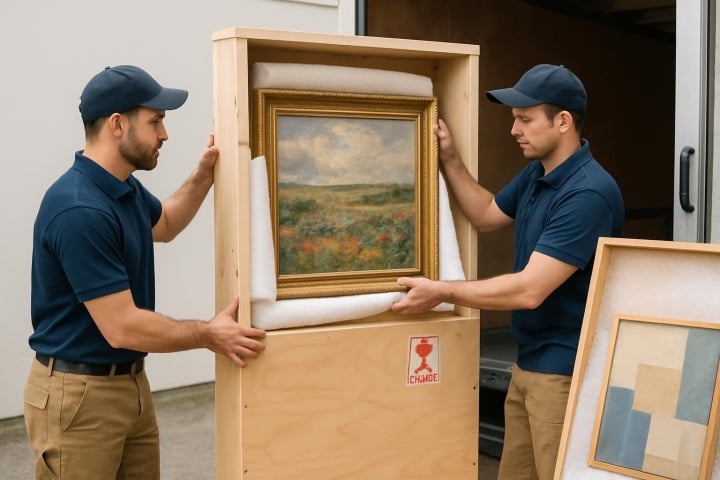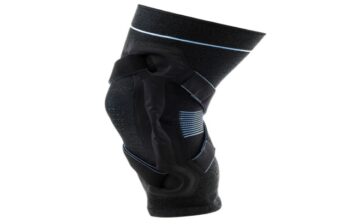Safely transporting paintings during a move demands meticulous packing and the right choice of materials to guard against damage. Experts emphasize that packing artwork requires a layered approach blending durable supplies and careful techniques to protect frames, canvases, and glass surfaces. Selecting proper boxes and packing materials like acid-free paper and bubble wrap ensures that fragile artworks survive shifts and bumps in transit. Entities such as Clear Home Solutions and professional movers consistently highlight the importance of using specialized packing resources tailored for fine art transport.
Incorporating academic research from Cornell University and the University of California, Los Angeles, offers insight into materials that minimize moisture and impact risks. Meanwhile, organizations like the National Association of Senior and Specialty Move Managers recommend precise labeling and handling protocols to guarantee artwork preservation during moving. Not all boxes are created equal; picture shippers, mirror boxes, and custom wooden crates each serve different protective roles depending on painting size and fragility.
Whether handling valuable pieces like Chanel wall art or family heirlooms, investing in quality packing supplies and adhering to proven packing steps pays off in avoiding costly repairs and heartbreak. Throughout this guide, industry professionals, including Marty Stevens-Heebner, contribute practical advice to support effective packing into safe transport procedures. Detailed bubble wrap application, protective corner placements, and strategic cushioning elevate artwork protection beyond simple wrapping. This detailed approach transforms the complex process of packing paintings into manageable, repeatable steps that ensure fine art reaches its destination unscathed.
How to Pack Paintings for Moving: Essential Supplies and Materials
Choosing Protective Packing Materials: Acid-Free Paper, Glassine, and Bubble Wrap
Using the correct packing materials is fundamental to protecting paintings during packing and transport. Acid-free paper and glassine are preferred for wrapping artwork because they prevent chemical reactions that could damage surfaces or frames. Newspaper or regular plastic films should be avoided, as ink transfer and moisture retention can cause irreversible harm.
Bubble wrap is another cornerstone of artwork packing, offering essential cushioning without scratching delicate surfaces. The bubbles should face outward when wrapping to prevent imprinting patterns onto the artwork or frame. Additionally, the thickness of bubble wrap should be chosen based on painting fragility: at least two layers for standard frames; more for rare or oversized works.
- Acid-Free Paper: Protects artwork from acid damage and dust.
- Glassine Paper: A smooth, non-stick surface ideal for canvases and glass protection.
- Bubble Wrap: Cushions shocks with outward bubbles to avoid surface damage.
- Artist Tape: Used to secure protective papers without leaving residue.
- Gloves (latex, nitrile, or cotton): Essential for handling unframed artwork, avoiding fingerprints and oils.
Leading art movers like Marty Stevens-Heebner stress the synergy between packing materials and handling care, where protection starts with the right surface contact and padding. These materials form the first line of defense, critical before moving paintings into boxes intended to absorb larger shocks during transit.
| Material | Primary Use | Benefits | Common Mistakes to Avoid |
| Acid-Free Paper | Wrapping artwork surfaces | Prevents acid damage and dust accumulation | Using standard paper or newspaper causes ink transfer |
| Glassine | Protecting canvases and glass | Non-stick, moisture-resistant, smooth surface | Replacing with plastic wrap can trap moisture |
| Bubble Wrap (Large Bubbles) | Shock absorption for moving | Provides cushioning and surface protection | Incorrect bubble orientation is causing imprinting |
| Artist Tape | Securing the paper wrap | Non-residue, gentle adhesion | Using duct tape or regular packing tape on artwork |
Selecting the Best Boxes for Moving Art: Picture Shippers, Mirror Boxes, and Custom Crates
Choosing the right boxes is a crucial aspect of packing paintings efficiently. Picture shippers are specially designed boxes for framed and canvas paintings, usually with double walls for added protection. Mirror boxes resemble picture shippers but offer extra height or width to accommodate oversized glass or artwork with protruding frames.
For extremely large or valuable paintings, custom wooden crates provide maximum protection. These crates are often constructed locally by professional packers or can be purchased pre-made for standard oversized items. Their rigid structure helps absorb impact and prevents crushing, making them ideal for heirlooms or premium art collections such as popular pieces like Chanel wall art.
- Picture Shippers: Best for standard framed or canvas paintings.
- Mirror Boxes: Suitable for glass artworks and oversized frames.
- Custom Wooden Crates: Reserved for large, fragile, or highly valuable pieces.
- Oversized Artwork Boxes: For non-standard dimensions needing extra space.
The National Association of Senior and Specialty Move Managers underscores how selecting the appropriate box size minimizes movement and reduces packing time, resulting in safer transport. Incorrectly sized boxes can cause damage by allowing paintings to shift or become crushed by neighboring objects inside transport vehicles.
When to Use Wooden Crates or Oversized Artwork Boxes for Extra-Large Paintings
Wooden crates serve as the ultimate in protective packing materials when dealing with very large or particularly fragile works. Choosing a custom-built crate is often necessary when:
- The painting exceeds standard box dimensions.
- The artwork contains valuable or antique frames requiring extra stability.
- Glass components on the artwork are at increased risk of breaking.
- The painting must be displayed or stored vertically during transport.
Oversized artwork boxes can be effective but may lack the structural strength that wood crates offer. Professional art movers advise consulting experts like Marty Stevens-Heebner before deciding on custom packaging for very large paintings. Considerations include crate design, ventilation, and securing mounting elements inside the crate to prevent shifting.
Why Gloves Count: Handling Unframed Artworks with Care
Handling unframed artwork safely requires careful attention to hygiene and protection. Wearing gloves—whether cotton, latex, or nitrile—prevents body oils, dirt, and moisture from touching the artwork surface. Experts from Cornell University highlight that fingerprints or smudges on unprotected canvases may degrade the paint or surface textures over time.
Gloves also reduce the risk of accidental tearing or abrasions during packing. Clear Home Solutions recommends always having multiple pairs on hand during packing, replacing them after handling different artworks or after the gloves become soiled. This attention to detail can avoid potential damage invisible to the naked eye but harmful in the long term.
- When to Wear Gloves: Handling unframed or canvas artworks.
- When Gloves Are Optional: For framed paintings with intact protective glass.
- Types of Gloves: Cotton for gentle surfaces; latex/nitrile for better grip and protection.
- Changing Gloves: Between different artworks or after contamination.
Following this procedure aligns with recommendations from high-level professional movers and curators, protecting art integrity long before it reaches its new home.
Labeling and Marking Artwork Boxes for Safe Handling During the Move
Effective labeling and marking streamline the moving process and reduce accidental mishandling. Each box containing paintings should have visible labels indicating:
- FRAGILE – HANDLE WITH CARE
- Artwork – Do Not Stack
- Top/This Side Up Arrows
- Owner’s Contact Information or Inventory Number
Marty Stevens-Heebner highlights that clear labeling supports communication between movers and the homeowner, preventing shattered glass or damaged frames due to the absence of handling instructions. Labels applied with bright colors or stickers increase visibility in busy moving environments, while notation of contents helps prioritize unpacking or inspection upon arrival.
| Labeling Element | Purpose | Recommended Method |
| Fragile Mark | Alert handlers to exercise caution | Bold permanent marker or pre-printed “Fragile” stickers |
| Directional Arrows | Indicate the correct orientation for packing | Laser printed or permanent marker on multiple sides |
| Content Label | Identify artwork inside for inventory and unpacking | Typed or handwritten label, taped securely without tape on box seams |
| Owner Contact | Provide emergency contact or destination info | Small label inside each box or attached outside |
Proper labeling comprises an integral part of successful packing and transport, making it a small yet powerful step in artwork moving procedures.
Expert Preparation: Steps Before Packing Your Paintings
Removing Paintings and Hardware from Walls without Damage
Careful removal of paintings from walls lays the foundation for safe packing. First, stabilize the painting by firmly supporting it from beneath. Remove hanging hardware such as wire, hooks, or brackets gently, avoiding impacts on the frame or artwork.
Use appropriate tools to loosen nails or screws, preventing frame cracking or breakage. For museum-quality artwork, some homeowners consult professional movers or specialists like Marty Stevens-Heebner for advice and assistance. This preventive step reduces the risk of damage before packing even begins.
- Identify the weight and size of the painting before removal.
- Use gloves to prevent smudges or damage when handling unframed canvases.
- Have an assistant for heavy or oversized paintings for stability.
- Safely detach hanging mechanisms without stressing frame joints.
- Place the painting face-up on a clean surface for packing preparation.
Cleaning Artwork Surfaces and Using Tape to Prevent Shattering
Cleaning artwork surfaces before packing removes dust and grime that could affect wrapping adhesion or cause damage during transport. Use soft microfiber cloths or artist-approved cleaning materials—never abrasive wipes or chemicals. For art with glass, lightly dust to avoid scratching.
Applying masking or artist tape in an “X” or criss-cross pattern over the glass protects it from shattering during moving. This technique, recommended by Clear Home Solutions and University of California, Los Angeles researchers, helps contain glass shards if breaks occur unexpectedly in transit.
- Use gentle, non-abrasive brushes or cloths for dusting surfaces.
- Do not apply cleaning liquids directly to canvas or paintings.
- When taping glass, use low-adhesion artist or masking tape.
- Apply tape in an “X” pattern covering the entire glass portion.
- Inspect glued areas to ensure tape does not stick to paint or frame finishes.
How to Protect Canvas, Framed, and Glass Art from Moisture and Surface Damage
Moisture is a hidden enemy of artwork during moving and storage. Protective wrapping should include barriers against humidity and condensation. Acid-free paper and glassine provide breathable but water-resistant layers. Plastic is generally discouraged as it traps moisture, promoting mold or paint flaking.
For framed paintings, sealing edges with light paper wrap beneath the bubble wrap adds an extra layer of moisture defense. Several studies, including ones referenced by Cornell University, suggest including silica gel packets inside boxes to absorb any residual humidity during transport.
- Wrap canvases and artworks in acid-free glassine or paper first.
- Layer bubble wrap on top with bubbles outward to avoid imprinting.
- Avoid direct contact of plastic wrap with artwork surfaces.
- Add silica gel packets inside boxes to reduce internal moisture.
- Store wrapped paintings upright in a dry, temperature-controlled area until moving.
We hope you found this blog post on How to Pack Paintings for Safe Transport useful. Be sure to check out our post Types of Packaging Materials for more great tips!
Have Experience in the Moving Industry? Want an Additional Income Stream? Work With All Around Moving!
Partner with us, relocation moving consultants, and we’ll help you make money. Click here to learn more about the offer.






